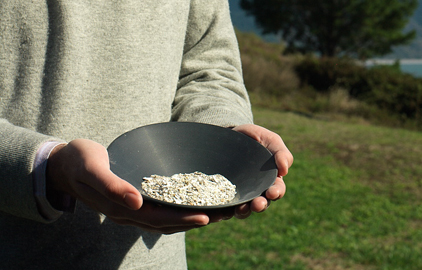If your wish is to be cremated after you die, there are a few things you'll want to do to make sure this wish is carried out. You must be sure that your next of kin are aware of your choice. You must consider cost, preferred service provider, and perhaps even the celebratory event. We have developed some steps you can take to ensure that your wishes are honored, and to lift some of the burden from your family’s shoulders.
What should I do if I want to be cremated? What steps can I take before death? What should I tell my family and friends? How can I ensure my cremation wishes will be carried out? We provide these suggestions for securing your wish for cremation.
Things to Know:
- It's a good idea to talk about your wishes for cremation with family and friends as early as possible.
- Think about leaving a written plan with loved ones or including your wishes in a legal document.
- You can research crematoriums that engage in environmentally-friendly practices, like removing metal parts before incineration.
- It is possible to set aside funds for your cremation in a Totten Trust, also known as a payable on death account.
- Prepaying for cremation services is the only absolute way to ensure your wish for cremation is carried out.
Step 1: Let your family and closest friends know that cremation is what you want.
Discuss with them why you have chosen cremation over other options. Make sure the designated person(s) who will make your arrangements are in agreement with your decision. For more information, see our article on Choosing Cremation.
Step 2: If you have a preference for the care of your cremation ashes, share it with your family and closest friends.
Cremation ashes can be scattered, buried, or kept. If you have a preference, make sure your family and friends are informed so it will be followed. If you choose to have your ashes scattered, it is a good idea to look into whether it is legal and/or practical to scatter at your chosen location, and also that the type of ceremony you wish to have, if any, can be realistically carried out.
Step 3: Leave written plans, detailing some or all of your final preferences, or include your wishes in a durable power of attorney for health care document.
Do you wish to have a home funeral with a viewing so that your friends and family can say goodbye before your cremation? Do you want your family to throw a life celebration at your favorite park so that they can grieve with laughter as well as tears? If you have any preferences in this matter, make sure to discuss them with one or more family members and/or leave records for your loved ones to find. You can even include your wishes in your advance directives; this allows you to designate a person to carry out your disposition decisions. This person may not otherwise be legally recognized as your next of kin, so designating them in your directives will ensure that they can see to your after-death preferences. For more information, see Preplanning a Funeral or Memorial Service, andAdvance Health Care Directives.
Step 4: If you wish to make your cremation more environmentally sound, there are some steps you can take as part of your preplanning.
These can include ensuring that your chosen crematorium will remove any foreign objects, such as amalgam dental fillings or other metal parts, the incineration of which release mercury into the environment (not all crematoriums offer this service, so be sure to ask beforehand). If you wish to have your ashes interred underground, consider purchasing a biodegradable urn or cremation vessel. That being said, be advised that because crematorium furnaces are generally powered by large quantities of natural gas, the cremation process does release some harmful greenhouse gases into the environment.
Step 5: To pay for your cremation, consider setting aside funds in a Totten Trust, also called a "payable on death" account.
With a Totten Trust, easily established through a bank, the account holder can set aside a certain amount of funds to be released directly to a beneficiary following the account holder’s death, bypassing probate court. However, Totten Trusts are not available in every state, and some states will levee an estate tax before the funds are transferred. For more information, see Prepaying for Services. Note that technically, prepaying for service is the only way to definitively ensure your wish for cremation will be carried out.
Step 6: Record your wishes for cremation in your will or living trust.
Some states recognize your authorization for cremation in a will or living trust. However, these documents are not accessible until after your death and, in many states, upon your death. Your closest relative, next of kin, or power of attorney for health care will be the one to make the final disposition decisions. If this person was not previously aware of your choices, he or she may fail to follow your wishes. That is why it is so important to discuss your choice for cremation with your family before your death. If you have any reason to believe friends and family will not carry out your wishes for cremation, you can secure your wishes through a prepaid plan.







